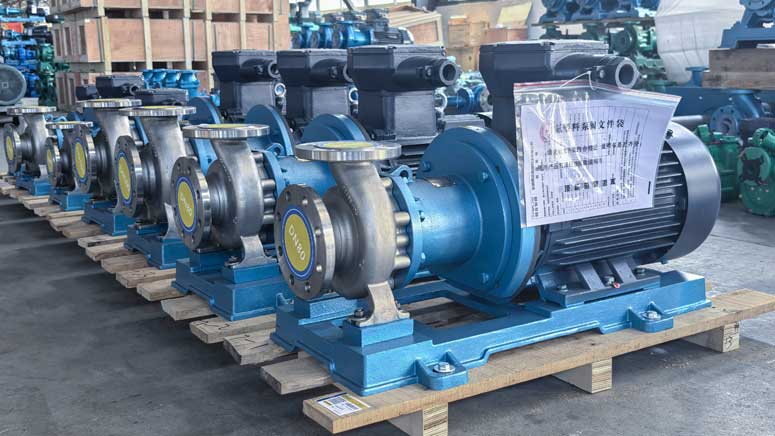Corrosion-resistant magnetic pumps are widely used in the chemical, pharmaceutical, and environmental industries due to their leak-free design and excellent corrosion resistance. However, it is crucial to prevent these pumps from running dry during operation. This article will explore the reasons why corrosion-resistant magnetic pumps should not run dry and provide preventive measures to ensure their safe and efficient operation.
Ⅰ.Working Principle of Corrosion-Resistant Magnetic Pumps
Corrosion-resistant magnetic pumps use magnetic drive technology to rotate the impeller, which facilitates the transfer of liquid. The absence of mechanical seals prevents leaks, making magnetic pumps ideal for handling corrosive liquids in tightly sealed conditions.
Ⅱ.Definition of Dry Running
Dry running refers to the condition where a pump operates without liquid. This situation typically occurs when the pump starts up without timely liquid entry into the pump chamber or when the liquid supply is interrupted during operation.
1)Impact of Dry Running on Corrosion-Resistant Magnetic Pumps
(1)Damage to Sliding Bearings
The sliding bearings in corrosion-resistant magnetic pumps are usually made of high-performance ceramics or silicon carbide, relying on the conveyed liquid for lubrication and cooling. Running the pump without liquid quickly causes overheating, leading to severe wear or even damage to the sliding bearings.


(2)Overheating
When running dry, the pump chamber lacks liquid flow, preventing effective heat dissipation. This leads to a rapid temperature increase in the pump body, damaging the pump and internal components and potentially causing fire hazards.
(3)Demagnetization of Magnetic Couplers
The magnetic coupler, a critical component in magnetic pumps, transfers motor power to the pump shaft. Prolonged dry running causes significant temperature rise in the magnetic coupler, leading to demagnetization, reduced transmission efficiency, and potential failure.
(4)Pump Body Damage
Without the lubrication and cooling provided by the liquid, dry running exacerbates wear and tear on the pump body and impeller, potentially causing irreversible damage.
2)Preventive Measures for Dry Running
(1)Install Liquid Level Controllers
Installing liquid level controllers at the pump's inlet allows real-time monitoring of the liquid level. If the liquid level drops too low, the controller issues an alarm or automatically stops the pump to prevent dry running.
(2)Set Up Flow Protection Devices
Flow protection devices monitor the actual flow rate of the pump. If low or no flow is detected, the device promptly cuts off power, stopping the pump and preventing dry running.
(3)Regular Inspection
Regularly inspect the pump's inlet and outlet pipelines, liquid level controllers, and flow protection devices to ensure they operate correctly. Early detection and resolution of potential issues help prevent dry running.
(4)Prime the Pump Before Starting
Before starting a corrosion-resistant magnetic pump, ensure the pump chamber is filled with liquid. This can be achieved manually or by setting up an automatic priming system, ensuring adequate liquid at startup.
Corrosion-resistant magnetic pumps are favored in various industries for their excellent sealing performance and corrosion resistance. However, the damage caused by dry running is significant and severe. Understanding the dangers of dry running and taking appropriate preventive measures—such as installing liquid level controllers, setting up flow protection devices, regular inspections, and priming before starting—can effectively avoid dry running and ensure the safe and efficient operation of corrosion-resistant magnetic pumps.





 +86 18130251359
+86 18130251359 teflowpumps@tlpumps.com
teflowpumps@tlpumps.com








 +86+0563-5093318
+86+0563-5093318
